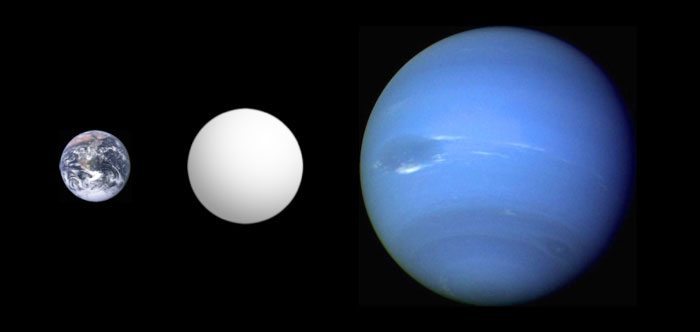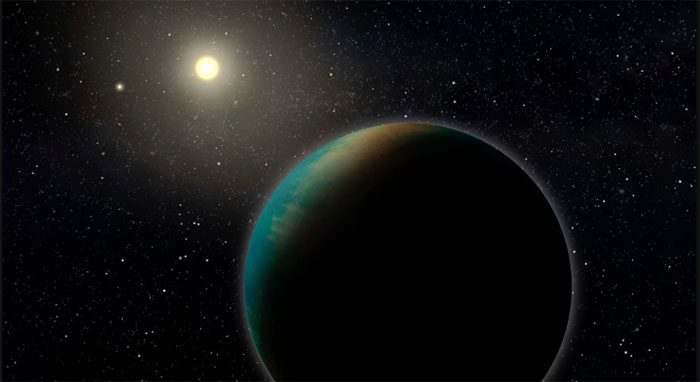Newly Discovered Super-Earths Join the List of Most Promising Exoplanets for Life.
Astronomers frequently find planets orbiting stars outside our Solar System, known as exoplanets. However, during the summer of 2022, a research team working with NASA’s Transiting Exoplanet Survey Satellite (TESS) discovered some particularly intriguing planets whose orbits lie within the habitable zone of their host stars.
One planet is about 30% larger than Earth and has an orbital period of less than 3 days. Another is 70% larger than Earth and may contain a deep ocean. These two exoplanets are classified as super-Earths. Super-Earths are planets with a mass greater than Earth’s but smaller than that of gas giants like Uranus and Neptune.
Earth remains the only known location in the universe where scientists are aware of life. It seems plausible to focus on searching for life on Earth-like planets—those with characteristics similar to Earth. Research suggests that the highest likelihood of astronomers finding life on another planet is on a super-Earth similar to those recently discovered.

Super-Earths are any rocky planets larger than Earth but smaller than Neptune. (Image: Aldaron, CC BY-SA)
About One-Third of Exoplanets Are Super-Earths?
Most super-Earths orbit cooler dwarf stars that have lower masses but significantly longer lifespans than the Sun. There are hundreds of cooler dwarfs for every Sun-like star, and scientists have found super-Earths orbiting 40% of the cooler dwarfs they have observed. With such numbers, astronomers estimate that there are tens of billions of super-Earths in the Milky Way galaxy alone, orbiting within the habitable zones of their host stars—regions where liquid water could exist on the surface. Since all life on Earth depends on water, it is considered a crucial factor for life.
Current predictions suggest that about one-third of exoplanets are super-Earths, making them the most common type of exoplanet in the Milky Way. The nearest super-Earth is just 6 light-years away from Earth. One could even argue that our Solar System is quite unique as it lacks planets with masses between those of Earth and Neptune.
Another reason super-Earths are ideal targets in the search for life is that they are much easier to detect and study than Earth-sized planets. Astronomers use two methods to search for exoplanets: the first is to look for the gravitational influence a planet exerts on its host star, and the second is to detect the dimming of starlight over a short period when a planet passes in front of it. Both of these detection methods are more easily implemented with larger-sized planets.
Super-Earths Have a Higher Likelihood of Being Habitable
Over 300 years ago, German philosopher Gottfried Wilhelm Leibniz claimed that Earth is the “best of all possible worlds.” Leibniz’s argument at the time was in response to the question of why evil exists, but contemporary astronomers are exploring a similar question by asking what makes a planet capable of supporting life. It turns out that Earth is not the best world among all existing worlds.
Due to Earth’s tectonic activity and changes in solar intensity, the climate of our planet has fluctuated over time from boiling hot to cold enough for global freezing. Earth was once uninhabitable for humans and larger organisms for most of its 4.5 billion-year history. Simulations indicate that the long-term existence of life on Earth was not guaranteed but rather a result of random factors. Humanity is indeed lucky to have survived.
Researchers propose a list of attributes that, if a planet possesses them, would greatly enhance its potential for life development. Larger-sized planets are likely to experience more geological activity—a feature scientists believe would promote biological evolution. Therefore, the most likely planet to harbor life would be one with a mass nearly double that of Earth and a volume 20-30% larger than Earth.
Additionally, it should have shallow oceans that allow sunlight to stimulate life at the ocean floor, and an average temperature of 77°F (25°C). It would also need a thicker atmosphere than Earth’s, which acts as an insulating shield. Finally, such a planet would orbit an older star than the Sun, allowing life more time to develop, and it would require a strong magnetic field to protect against cosmic radiation. Scientists believe that these combined attributes would create a planet with a higher likelihood of being habitable.
By definition, super-Earths possess many of the characteristics of potentially habitable planets. To date, astronomers have found over 20 exoplanets that are super-Earths theoretically capable of supporting life far better than Earth, if not the best of all existing worlds.
Recently, an interesting addition has been noted in the list of potentially habitable planets. Astronomers have begun to discover exoplanets ejected from their star systems, and there could be billions of such planets moving throughout the Milky Way galaxy. If a super-Earth with a thick atmosphere and abundant water is ejected from its star system, it could sustain life for tens of billions of years—much longer than the time life on Earth will persist before the Sun ends its life cycle.

TOI-1452b – one of the newly discovered super-Earths that may be covered in a deep ocean and holds significant potential for life. (Image: Benoit Gougeon, University of Montreal, CC BY-ND)
Searching for Life on Super-Earths
To find life on distant planets, astronomers will need to search for biosignatures and biological byproducts that can be detected in a planet’s atmosphere.
The James Webb Space Telescope was designed before astronomers discovered exoplanets, so it is not optimized for studying them. However, it can perform some of these scientific tasks and is planned to focus on two super-Earths with potential for life during its first five operational years. A set of other super-Earths with massive oceans discovered in recent years, as well as the planets found this summer, are also attractive targets for James Webb.
However, the best opportunity to search for signs of life in exoplanet atmospheres lies with the next generation of giant ground-based telescopes, such as the Extremely Large Telescope (ELT) with a 39m aperture, the Thirty Meter Telescope (TMT), and the Giant Magellan Telescope (GMT) with a 24.5m aperture. These telescopes are currently under construction and are expected to start collecting data by the end of this decade.
Astronomers know that the components necessary for life are out there, but “habitable” does not necessarily mean it can be colonized. Until researchers find evidence of life elsewhere, it can be assumed that life on Earth is merely a special coincidence.
While there are many reasons why a potentially habitable world might not show signs of life, in the coming years, if astronomers study these optimal super-Earths for life and find nothing, humanity may be forced to conclude that the universe is a very lonely place.

















































